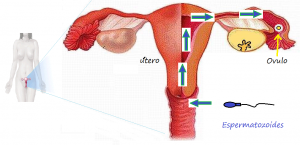Fibroids are benign tumors, originating in the muscular wall of the uterus. They are extremely common and up to 30% of women can develop fibroids at some point in their lives.
It is extremely rare for them to develop into malignant tumors that can endanger the life of the woman who suffers from them. However, these can affect women’s health in other ways. Sometimes fibroids can cause abnormal, heavy vaginal bleeding or heavy menstrual periods. They can also become significant in size and cause symptoms of pain and discomfort by compressing other organs in the female pelvis, such as the bladder and bowel. Finally, fibroids can affect the uterus in such a way that they interfere with the normal process of reproduction and the normal course of pregnancy.
Different aspects of fibroids determine whether they can decrease the chances that a woman can get pregnant and that it reaches a happy term. The most relevant of these is its location. Fibroids can grow from the wall of the uterus outward (subserosal), into the thickness of the uterine wall (intramural) or from the wall of the uterus into the uterine cavity (submucosal). There is enough medical evidence to be able to say that subserosal do NOT decrease the possibility of getting pregnant naturally, nor do they affect the development of the pregnancy. On the other hand, it is also clear that submucosal decreases the chance of getting pregnant and increases the risk of spontaneous pregnancy loss (miscarriage). There is a high degree of controversy about whether intramural fibroids affect a woman’s fertile potential and pregnancy development. Apparently, this only happens when these fibroids become large (greater than 5 cm) or when they are multiple.
There are several ways to study the presence of fibroids in a woman’s uterus. The initial approach is transvaginal pelvic ultrasound, a method based on ultrasound imaging. This allows the presence and size of fibroids to be detected. Although it is a simple and extremely useful test, it often needs to be complemented with others to determine the location of the fibroids and the degree of involvement of the uterine cavity. These include sonohysterography, which consists of a transvaginal pelvic ultrasound with the injection of fluid into the uterine cavity and the hysteroscopy, which consists of the entry of a small lens into the uterine cavity that allows you to see its interior on a video screen.
In case it is considered that fibroids are affecting the possibility and/or prognosis of pregnancy, they can be removed through minimally invasive and outpatient surgery. These minimally incision surgery methods are known as laparoscopy and hysteroscopy. Laparoscopy is based on the entry of a lens into the abdomen through a small incision of 1 cm in the navel and some instruments or forceps through minimal incisions (0.5 cm) in the lower abdomen area. This is used for the extraction of subserosal and intramural fibroids. Hysteroscopy allows the removal of submucosal fibroids when entering the uterus vaginally.
In general, the vast majority of patients with myomatosis do not have symptoms and do not require any type of treatment. In women with difficulty getting pregnant who have large submucosal or intramural fibroids, surgical treatment is simple, minimally invasive and with excellent results.
Dr. Juan Luis Giraldo

